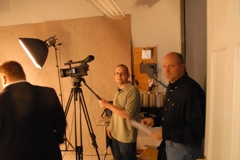For years, my approach to writing for the Web was a lot like other writers who grew up in print advertising. Mostly, it consisted of placing brochure ware on a site. I was happy. Clients were happy. And life went on. But while I wasn’t looking, the Web changed the way we communicate, the way we connect and the way we formulate opinions.
How Different Is Reading for The Web?
To understand how writing for the Web is different, you have to understand how reading the Web is different. Most readers don’t read the Web at all—they scan. How could they not? There is inexhaustible content out there. And studies prove that ink on paper is easier to read than pixels on a screen. So you should write in a way that makes your content “scannable.” Be concise. Use subheads. And consider your tone of voice. Be conversational and informative.
In Some Ways, The Web’s Not So Different.
I’ve always written copy for short attention-span theater, especially for advertising. See the headline. See the logo. You get it right? Great, I’ve done my job. If you read the body copy, hey I’m closing the sale. The Web is similar. See the headline, the subheads—you get it, right?
The difference to me is, with ad copy, I feel as though I’m beguiling the reader. With the Web, the reader has opted in. It’s my job not to lose him or her.
What Isn’t Changing.
It’s tough to read about marketing or even our culture at large without reading how the digital world is changing everything. Obviously, our behavior is changing. But what isn’t changing?
Our human nature.
Our deepest primal desires, the things that have driven our decision-making for thousands of years, continue to drive us today. Bill Bernbach was quoted as saying “It is fashionable to talk about changing man. A communicator must be concerned with unchanging man.”
Far more recently, in a Wired article entitled, “Is Advertising Dead?” Michael Schrage writes, “time and geography—more than human nature—separates the captive crowds at the Roman Colosseum from user lists on the Internet.”
What this tells me is that we’re not evolving into emotion-less drones seeking only information, facts, tweets and the opinions of our peers online. We can be entertained. We can be engaged. We can even be persuaded.
Online, Are Creativity and Effectiveness Mutually Exclusive?
Of course not. I’m beginning to see more and more Web 2.0 sites that are adept at telling a good story and keeping content fresh and dynamic. But there are still plenty of proponents of Web 2.0 who are convinced otherwise.
This should go without saying but it always seems to get lost in the discussion of Web content: Make the copy interesting (See my last blog). Certainly there are guidelines you should follow when you’re developing content for the Web. But at the end of the day, good writing is good writing.

